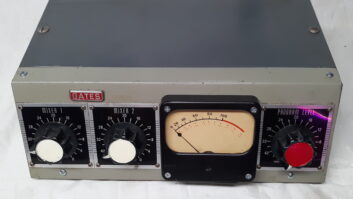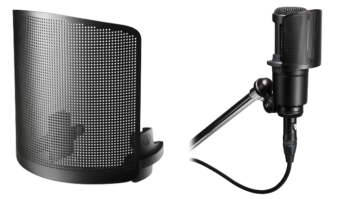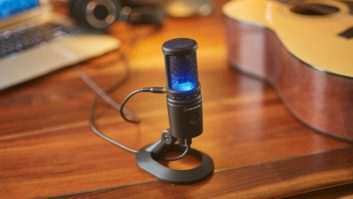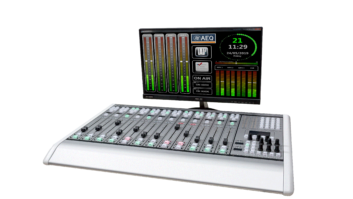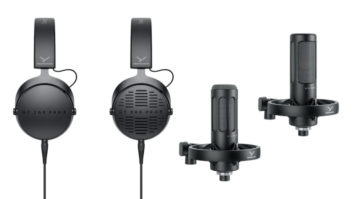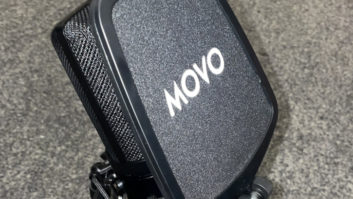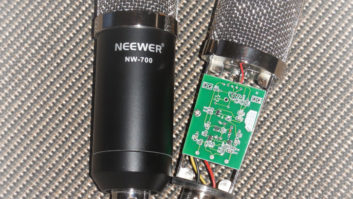
Welcome to Open Mic, a new endeavor to give radio production personnel a forum to express themselves, impart information and stir the pot, in a less formal format. Here, L.A. radio vet and “V/O Guy” Don Elliot gives some voice-over pointers and finds a mic that he really likes. If you’d like to propose a piece for Open Mic, contact Brett Moss at [email protected].
In SAG and AFTRA, there’s a famous old expression: “If you want work, leave town!” Yes, it seems as if whenever you are just getting away for some time off, you wind up with a flurry of requests for eleventh-hour projects, auditions or whatever.
It used to take a lot of outboard gear to achieve a particularly desirable competitive sound, especially something that catches the ear in an audition, compared to all the muck, schlock and pure purple padoo an agent or casting director must read through to find “the one” for the job. In this business, you want to be the one who stands out.
So how do you win an audition or do the job from the road, and not have it sound like it was done outside a pro studio?
Until recently, the secret chain in my little corral that we pioneered at KIIS(FM) was a result of my piling on a rack version of the Aphex Aural Exciter and “Big Bottom” units, a Symetrix 528 and a Universal Audio LA-3A compressor/limiter, with the best V/O shotgun mic I know of, the Sennheiser 416. This creates a competitive sound that gets the listener’s attention because it competes with the “big-as-a-barn-door” sound the audience is used to hearing in movie trailers and big production accounts.
I do this because the audience is used to that sound, and a lot of this game is all about “compared to what?” It’s where the bar is. (The one raised for standards and high class, not the one where we raise the glass!) Your product is going to get played adjacent to something else, so the ear already has a reference from hearing other product, and if yours doesn’t measure up to or exceed that standard, you’ve lost the game before you ever open your mouth!
AUDITION CHALLENGES
The kids who get trophies for not winning at soccer are going to be pissed off at what follows.
The fact that “it’s not fair” is exactly what you want.
You need an unfair advantage in auditions. You want an unfair advantage.
There’s another old expression in AFTRA and SAG that I loosely paraphrase: “The audition is the job. You either get it, or you don’t.”
Let’s say two talents are equal in all things, until we compare the tech end. If the quality isn’t there, the listener doesn’t have a tech checklist of why; they simply hear something ugly compared to something pretty. It’s a logic call, but fueled with vibes and emotional responses to audio stimuli. It’s aural sex appeal.
But we’re citing a lot of gear to use. Well, that could be a lot for a carry-on suitcase.
Not too long ago, I took my chain along and did some work while on a cruise. I had horrendous experiences trying to get MP3s transmitted from the ship to the client’s studio.
I decided to compare notes with V/O legend Joe Cipriano on how he handles production on the road. Travels can take you anywhere in the world, whether it’s work or play, but in the voice business, responsiveness and deadlines are a key to keeping clients happy and making them look good. And when that happens, you get bonus points for reliability when they know they can depend on you.
A FEW WITH JOE
Here are some excerpts of my quickie interview.
Me: “Tell me how you work with project ‘home-away.’”
Joe: “It’s been a few years since I worked from a cruise ship, and yes, at that time, the connection was like going back to dial-up speeds. I needed to read to a promo, which usually means the engineer cues up the promo and sets up three beeps before the start and you ‘read to the promo’ in real time.
“However, we couldn’t connect live because of the low Internet speeds, so I had the networks email a very low-res audio version of the spot as an MP3. I would then import it into Pro Tools in my laptop and ‘read to the audio of the promo’ locally into my laptop. Then, I would export my audio only and turn it into a high-res MP3 at 320 kbps and email it back to the studios. They would then import the audio into their system and sync it up with their video.”
Me: “So what are you using these days?”
Joe: “In recent years, I use a Verizon MiFi 4G LTE cellular mobile hotspot for all of my Source Connect sessions when I’m away from my home studio. I don’t even use hotel Internet anymore. The MiFi is lightning fast, and I have it set up with a static IP, which makes my SC connection rock solid. I’ve done many sessions from the back of a rental car with my MacBook Air, Sennheiser 416 with a Focusrite iTrack Solo or a CEntrance MicPort Pro as the interface and Sony headphones. Wherever I am, I find a parking lot that is quiet and away from main roads and get in the back seat, which makes for the best acoustics. You’ve got a leather or fabric ‘back’ of the front seat in front of you, fabric ceiling, and it’s pretty darn quiet in a closed up and buttoned up automobile.”
Me: “Thanks, Joe, for your hints, insights and secrets. It’s always great to see how others overcome these obstacles. I feel like we have parted the curtain to see what the wizard was using to get ‘that sound.’”
SOLUTION

I mentioned a ton of outboard gear earlier.
But what if you could take all that with you in one small unit when you are packing?
Even better, what if someone built all of that into the microphone itself?
I have had many discussions with Aphex’s top gun Jace Nuzdack about his latest product, which is all that and more. It’s called “Microphone X” ($199.99 MSRP).
Microphone X is a USB mic with Aphex analog processing in the microphone. To be more specific, it has Aural Exciter analog high-frequency enhancement; Big Bottom analog low-frequency enhancement; and analog optical compression. Also included are a high-performance headphone amplifier, recording software and a desktop stand.
I should mention that the hot little boutique-grade preamp, the CEntrance MicPort Pro that Joe relies on (and I have also carried everywhere I go for years now), is in the heart of this Aphex mic. Seems two savvy companies sweetened the deal nicely for us, and their synergy resulted in this fine piece of gear.
Incidentally, whenever I get to the part about the compression, most people shake their head with a hearty, “Oh no, man … We like to do that stuff in post.”
Right. After sifting through 13 takes of distorted performances because the talent changed levels unexpectedly and hit a peak in the read … so no biggie, right? Just recut it lower? Why not have access to the “take that got away” by using some protection in the session at the mic itself, before it hits the DAW so that you get to keep that “best take” in the first place? Duuuh. Double duh. My hat’s off to Aphex for this accomplishment.
Another thing I like about Microphone X is that it is powered by USB, so it requires no extra battery power.
Using Microphone X with an iPad requires a bit of finagling. You must have the camera kit for 30-pin or Lightning jacks, and there is no way to charge the iPad and use the Microphone X at the same time. You’ll get about five full hours of recording time with a full charge.
I should also point out that the only connection on the Microphone X is USB, so you must have it connected to a computer or iPad with a DAW application to hear it at all.
By the way, on the Mac you can setup multiple Microphone X units as an aggregate device. However, it is up to the DAW or broadcast software to be able to send the output signal of the mic to monitor.
PARTING WORDS
I’ll toss in some free advice on another common challenge in remote recording and making it sound like a studio: acoustics. Joe commented on his back seat of the car activities. But if you are carless when the need arises (stop grinning), you might be able to deal with room acoustics with pillows and blankets or hotel closets. That’s a tip from the pros.
While I’m on the subject, there’s another issue dealing with recording on iPads or iPhones while on the road. Truthfully, these devices were made for content consumers, not content generators, despite the fact that Apple touts their products as being friendly to creatives. Try generating an MP3 output from one. There are several solutions to this. If you ask Apple, they will tell you to plug into iTunes on your laptop or desktop and convert to MP3 and then send it.
Now wait a minute … When I’m on the road I don’t always have either at my disposal. I need to turn this puppy around in under 15 minutes.
Currently, the most exciting solution out there that is compatible with all these requirements is a little free app audio editor called TwistedWave (from www.twistedwave.com). Record, edit and output to email or FTP as a converted MP3, all from the iPhone or iPad. There is also a paid version available that runs on Mac laptops if that’s what you are packing.
There. Now you know how to take your show on the road, too!
For information on Microphone X, contact Aphex in Utah at (801) 699-2272 or visit www.aphex.com.
Don Elliot is a former program director at KIIS(FM) and well-known voice-over artist. His demo is available athttp://tinyurl.com/Don-Elliot-Promo-Demo. You can also contact him viaemailor by phone at 818-209-5531.





